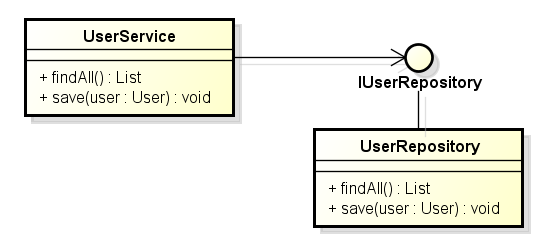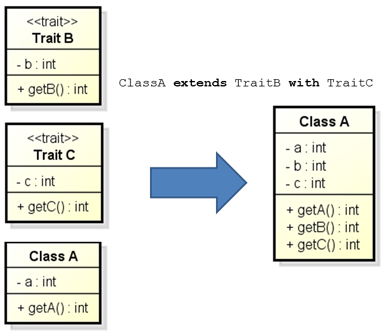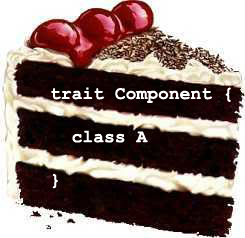

Eat that cake!
source link: http://blog.rcard.in/design/2014/08/28/eat-that-cake.html
Go to the source link to view the article. You can view the picture content, updated content and better typesetting reading experience. If the link is broken, please click the button below to view the snapshot at that time.

Eat that cake!
Aug 28, 2014
design pattern
dependency injection
scala
Introduction
We know it: managing dependencies between software components within a project of magnitude rather than trivial could become a hell if not planned properly. Many of you will wonder why it is necessary to dwell too much on this topic. Responses to this question are two, namely:
- low grade of coupling;
- high grade of cohesion.
The minimization of dependencies between software components enables greater maintainability, and enhances software testability, cleanliness and elegance. A high cohesion allows us to join one of the basic principles of software development, the DRY principle, “Don’t Repeat Yourself”. So, the minimization of dependencies is a goal to be pursued at all levels.
For example, let’s analyze a classic software problem: a repository class (UserRepository), which
enables access to information stored on database, and a service class (UserService) that allows the
use of this information to other components.

Clearly, the direct association between these two elements creates a high level of coupling between them.
In particular UserService is responsible for creating an instance of UserRepository, tying the evolution
of UserService in the evolution of the UserRepository code. In addition, it is complex to design any
unit tests, which would require the replacement of a UserRepository with a mock in UserService code.
You can improve the situation by abstracting the UserRepository component in an interface and changing
the dependency in the UserService towards this interface.

This new configuration enables the use of dependency injection (DI) pattern. DI is a design pattern that helps to separate the behavior of a component from the responsibility for resolution of its dependencies.
For strongly typed object-oriented languages, you must use an external framework that handles and resolves the dependencies. These dependencies are suitably configured by the developer and framework uses these information to operate like a factory, managing the complete life cycle of software components.
In Java, for example, the most commonly used DI frameworks are Spring and Google Guice.
The Cake pattern
Scala provides a mechanism to resolve dependencies similar to DI, the cake pattern. Unlike DI pattern in other languages, such as Java, C++, etc … the cake pattern can be used directly with language constructs available in Scala.
Traits
In Scala the cake pattern is made possible by the presence of the construct of the trait. A trait is similar to a Java interface, but unlike the latter it can have both attributes, both methods completely implemented.
A trait also has a key feature for the cake pattern: can be “added” to any component as a mixin. In this way the attributes and methods of the trait are added to those of the component. This makes it possible to implement some kind of multiple inheritance, that is not allowed in other programming languages.

Self-type annotation
The Self-type annotation is a special construct that allows you to declare the dependencies of a component
from one or more trait, i.e. which trait should be associated with the component using mixin. For example,
consider the following class BarAble and trait FooAble.
trait FooAble {
def foo() = "I am a foo!"
}
class BarAble { this: FooAble => // self-type annotation
def bar = "I am a bar and " + foo()
}Using the notation this: => FooAble we mean that an object of class BarAble must be associated with
trait FooAble using mixin.
object Main {
def main(args: Array[String]) {
val barWithFoo = new BarAble with FooAble // mixin
println(barWithFoo.bar())
}
}In order to instantiate the object barWithFoo, the compiler checks the dependencies declared through mixin
and if these are not met it will provide the following error:
class BarAble cannot be instantiated because it does not conform to its self-type BarAble with FooAble
The full recipe
Trait and self-type annotation are the foundation of the cake pattern. Return to the main problem, namely the
resolution of dependency between the class UserService and the class UserRepository. An elegant solution
to the problem must not modify these two classes, maintaining isolated and distinct business aspects from
more technical aspects. For this reason, we define two traits whose aim is to enclose the original classes
in components more malleable, like layers of a cake.

trait UserRepositoryComponent {
val userRepository: UserRepository
class UserRepository {
def findAll() = Array[User]() // fake implementation
def save(user: User) = "Saving a user..." // fake implementation
}
}
trait UserServiceComponent { this: UserRepositoryComponent =>
val userService: UserService
class UserService {
def findAll() = userRepository.findAll
def save(user: User) = userRepository.save(user)
}
}In each of the new trait original classes are made available through an internal attribute. Note that an attribute
(val) has been preferred to a function (def) because both service and repository are Singleton classes: they
require no more than one active instance within an application. Also, note that both traits are abstract, since
internal class instances are not initialized.
Note in particular the latter trait, i.e. UserServiceComponent. Through the use of a self-type annotation is
declared the dependency upon trait UserRepositoryComponent, through which UserService class can access the
userRepository. In case you need to declare multiple dependencies this process can be repeated, using a notation
such as
this: A with B with C =>which A, B and C are traits similar to UserRepositoryComponent.
So we have built a mechanism for declaring dependencies among components. We need to take the last few steps and implement the real mechanism of dependency injection: the implementation of abstract trait; their composition, which allows the resolution of dependencies.
Let’s build a configuration object, implementing concrete instances of classes UserRepository and UserService.
object ComponentRegistry extends
UserServiceComponent with UserRepositoryComponent {
// Dependency injection
val userRepository = new UserRepository
val userService = new UserService
}The dependencies are resolved in one single place and can be modified using subclassing, simplifying unit testing and mocking.
In case you want to replace the dependency to the UserRepository class with a pure interface, you can provide a
trait within UserRepositoryComponent, which will be concretely implemented later.
trait UserRepositoryComponent {
def userRepository: UserRepository
trait UserRepository {
def findAll()
def save(user: User)
}
}References
Recommend
About Joyk
Aggregate valuable and interesting links.
Joyk means Joy of geeK